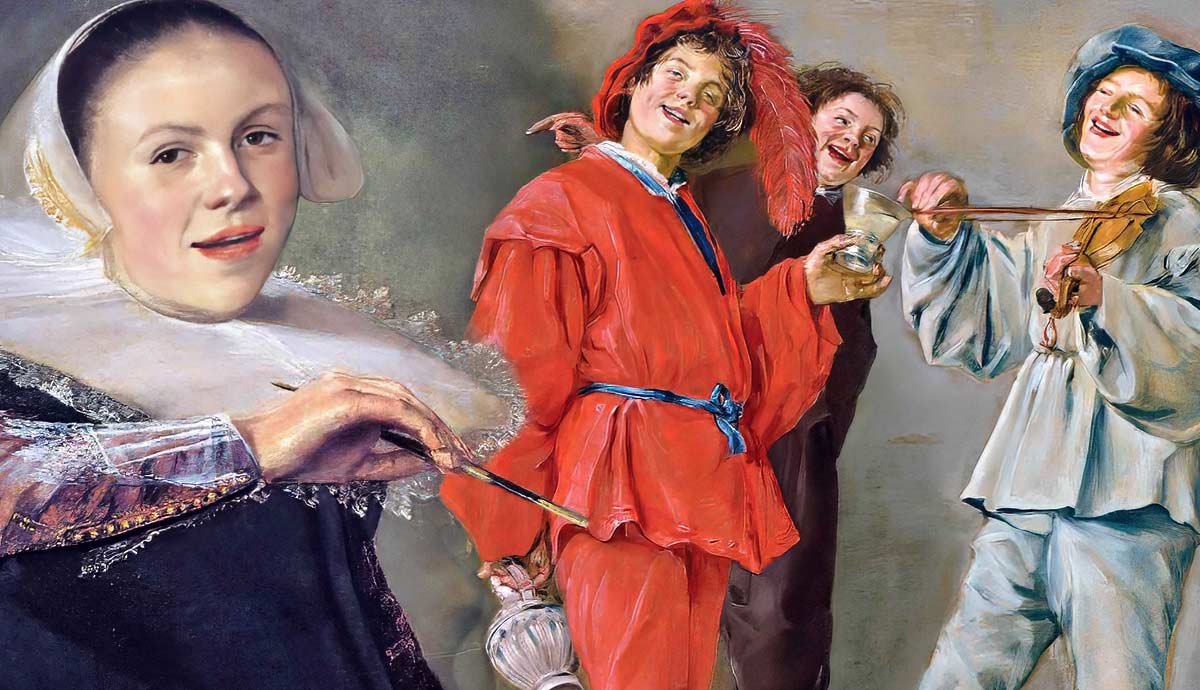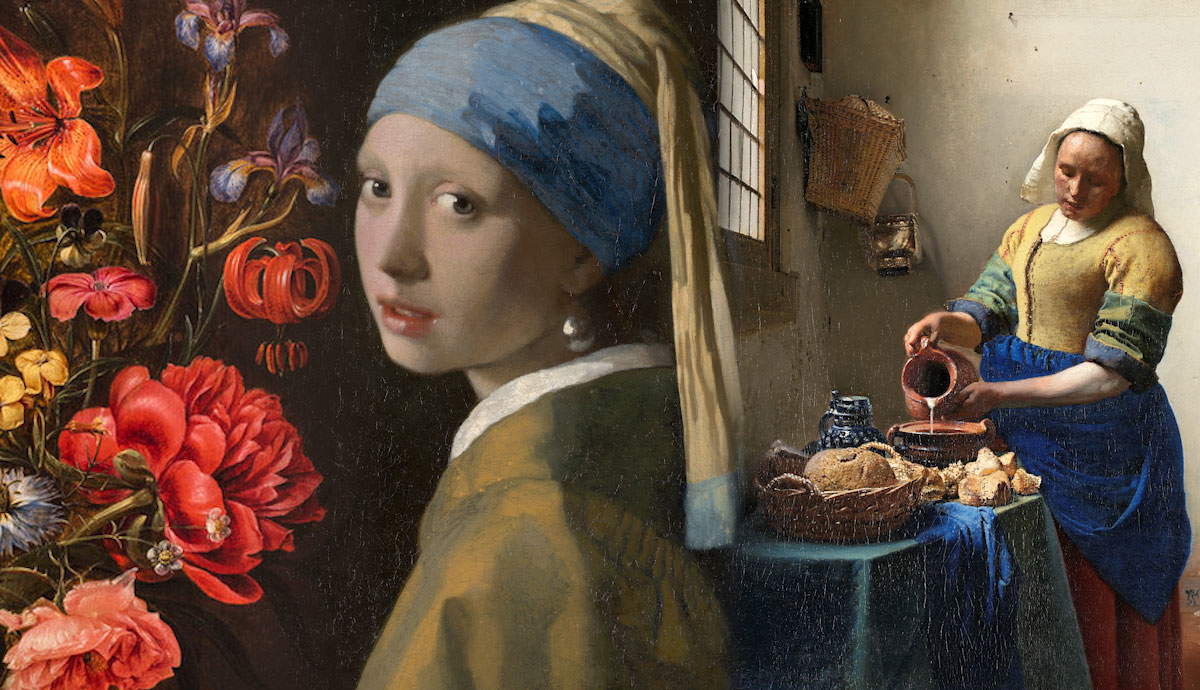
The 17th-century genre painter Judith Leyster was among the most accomplished artists living in the Dutch Republic during its famous Golden Age. However, shortly after her death, Leyster was all but erased from history, as has been the fate of many women artists over time. Luckily, after centuries of oversight and misattribution, Leyster’s distinctive body of work has been increasingly recognized and reexamined in recent decades.
Who Was Judith Leyster?

Judith Leyster’s dynamic Dutch genre paintings capture the look and feel of everyday life during the Dutch Golden Age. Leyster’s legacy as a commercially successful woman artist in 17th-century Europe, as well as her innovative contributions to the rich tradition of Dutch genre painting, make her one of the most interesting and important artists in Western art history. During Leyster’s lifetime, there were relatively few women artists working professionally in the Dutch Republic. Not only was Leyster among them, but she also achieved significant commercial success and national renown during her career as a painter.
In fact, she is considered to have been the most famous woman of the Dutch Golden Age altogether. Alongside the likes of Rembrandt and Vermeer, Leyster was known by name throughout the Dutch Republic during its Baroque era. These works satisfied a growing market niche for contemporary subjects and themes and played a significant role in the development of a distinctively Dutch approach to art.

Working alternatively in Haarlem and Amsterdam, Judith Leyster was most interested in creating engaging and intimate depictions of everyday moments. Common subjects in Leyster’s genre paintings include laughing children, drunken parties, musical performances, social interactions, and other realistic yet entertaining scenes. Leyster demonstrated a unique talent for conveying the personality, energy, and spontaneity of every person that she painted. This effect is strengthened by her loose, lively brushwork, which imbues every scene with a sense of movement and vitality.
Leyster’s mastery of light and shadow adds depth and drama to her paintings, while her rich color palette elevates the emotion and energy of every scene. Together, these qualities perfectly situate Judith Leyster’s genre paintings within the overarching aesthetic and thematic traditions of Dutch Golden Age art—and make her work continually stand out to art enthusiasts centuries later.
Leyster’s Early Life and Artistic Training

Judith Leyster was born in 1609 in Haarlem, a wealthy community and thriving center of the arts during the Dutch Golden Age. Her father, Jan Willemsz Leyster, borrowed the family surname from a local brewery he ran called The Leister. As the eighth child in a family of artists and art lovers, Judith Leyster demonstrated an early aptitude for drawing and painting. Despite limited information about her upbringing and early artistic training, it is clear that Leyster benefited from the approval of her family and access to formal art training—both unusual for would-be women artists in 17th-century Europe. Some scholars have suggested that Leyster pursued art professionally to help support her family financially in the face of bankruptcy.

Like many artists of her era, Leyster probably completed artistic training under the tutelage of multiple master painters during the 1620s. She most likely studied the fundamentals of drawing and oil painting with Frans Pietersz de Grebber, a widely-renowned painter and family friend who oversaw an active workshop of artists in Haarlem. While it is commonly assumed that Leyster also studied under Frans Hals, as the two artists share similar styles and subjects, there are no existing records of such a traineeship. In any case, by age nineteen, Leyster had already begun signing and dating her paintings—implying that she was already achieving success as an independent artist. From the start of her career in Haarlem, Judith Leyster specialized in Dutch genre painting.
Judith Leyster’s Rising Stardom

From the time she signed and sold her first painting, Judith Leyster’s reputation quickly grew in Haarlem and beyond. After working in and around Amsterdam and Utrecht, she returned to Haarlem in the 1630s. In 1633, Leyster became one of the first woman painters to be admitted into St. Luke’s Guild of Haarlem, a prestigious and highly exclusive group of professional painters. Leyster’s acceptance into the guild formally validated her artistic prowess with the title “Master Painter.” Her membership also provided her with more professional opportunities and platforms to promote her work. By 1635, Leyster had begun teaching her own students, indicating her standing as a sought-after expert.

This impressive series of career achievements firmly positions Judith Leyster as a prominent figure during the Dutch Golden Age. As Leyster’s paintings became increasingly in demand, and her name increasingly well-known in the Dutch Republic, she developed a unique way to sign her paintings. Instead of signing her full name, Leyster designed a monogram that combined her initials “J.L.” with a shooting star—a clever play on words. In Dutch, the word “leister” translates to “lodestar” or “guiding star.” At the time, it was a common name for the North Star amongst mariners. Additionally, Judith Leyster had been rightfully referred to as “the leading star” in art during her lifetime.
Breaking Barriers as a 17th-Century Woman Artist

During the 17th century, women who wanted to become professional artists faced several significant obstacles. While the Dutch Republic was in some ways more progressive than other societies at the time, there were still limited opportunities for women to pursue formal artistic training—even if their families supported such a pursuit in the first place. In addition to education, artists in the Dutch Republic relied on apprenticeships to master painters to successfully kick start their careers.
However, most painters who were qualified to offer an apprenticeship excluded women from consideration. This made it difficult for women artists to acquire the foundational skills, studio experience, and industry connections that professional artists needed to succeed. Additionally, compared to their male counterparts, women artists had fewer opportunities to interact socially with potential patrons of their work—and, when they managed to find a buyer, they were usually paid less.

On top of being systematically gatekept from the professional art world at every turn, 17th-century women were generally expected to prioritize family life over any other pursuit. Leyster overcame many of these aforementioned obstacles during her career. However, the majority of her known works were painted in a brief timeframe between 1629 and 1635. In 1636, Leyster married a fellow painter, Jan Miense Molnaer, with whom she had five children. Shortly after marrying, Leyster mostly stopped painting under her own name and instead focused on child-rearing and other household responsibilities typically assigned to women. However, amidst the demands of family life, Leyster likely continued to exercise her creativity by collaborating with her husband and contributing to paintings produced in his studio.
Leystser’s Death, Disappearance, and Rediscovery

In 1660, Judith Leyster died at the age of 50. Following her death, her reputation rapidly declined. Leyster essentially disappeared from the art historical canon in subsequent centuries. Many of Leyster’s works were either considered unattributed or credited to male artists, including her husband, Molenaer, and her more famous contemporary, Frans Hals. Other paintings were cataloged under “the wife of Molenaer” instead of Judith Leyster’s own name. While Leyster had signed many of these misattributed works with her own monogram, its meaning had since been forgotten. These misattributions, while most likely accidental, heavily contributed to Leyster’s erasure from history until the early 20th century, when her monogram was finally recognized on a painting wrongfully attributed to Frans Hals.
Judith Leyster’s Legacy

Since Judith Leyster’s reemergence just decades ago, scholars and museums have happily taken up the task of reattributing and researching her work. There are 35 surviving paintings that have now been rightfully attributed to Judith Leyster. Her immense impact on art history is becoming increasingly clear. Leyster helped lead the way for future generations of artists by successfully challenging the restrictive pathways that were available to young women in the 17th-century art world. The story of her centuries-long erasure and serendipitous rediscovery highlights the importance of recognizing and researching the contributions of women artists and other marginalized cultural contributors—not just during the Dutch Golden Age, but throughout global history.

Leyster’s masterful and cheerful genre paintings are now exhibited in prestigious museums across the Netherlands and around the world. In 2021, Leyster’s work was added to the famous Gallery of Honor at the Rijksmuseum in Amsterdam, which highlights the most important artists of the Dutch Republic. Notably, Leyster was one of the first women artists to ever be included in this curation. Today, museum attendees who encounter Judith Leyster’s reattributed work in person are enchanted by vibrant and engaging genre paintings that are at once emblematic of the Dutch Golden Age and deeply relatable to contemporary audiences.










